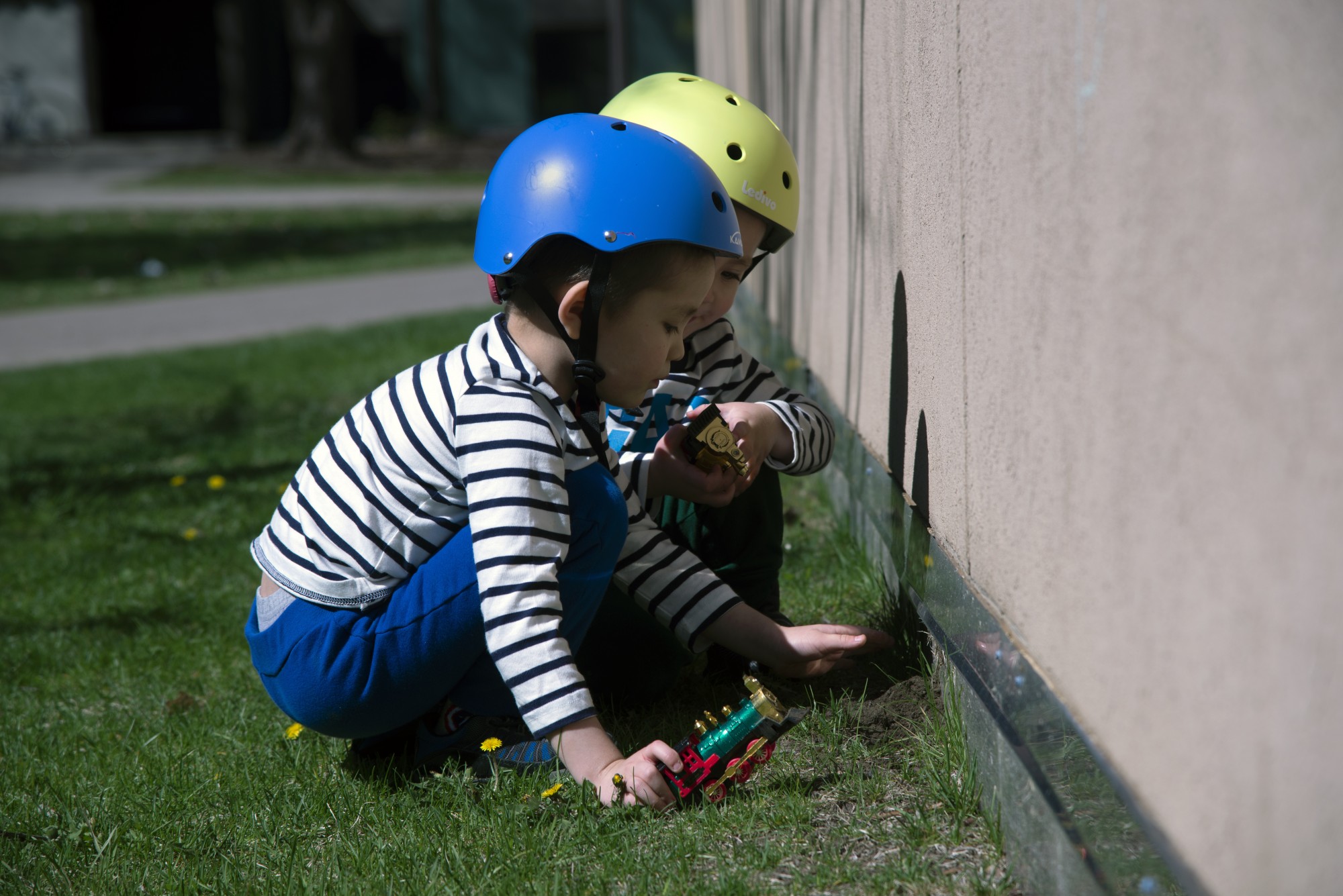For University of Minnesota students, staff and faculty who care for young children, the online transition has meant adjusting their workloads with new home responsibilities borne out of the stay-at-home order.
Though Gov. Tim Walz ordered the closure of schools for the rest of the school year to slow the spread of the virus, he asked that child care centers remain open to help essential employees.
The University’s Child Development Center officially closed to those who are not health care or emergency workers March 18. The Community Child Care Center, which primarily serves graduate and professional student parents, is also only serving families of essential workers. Even with several day care centers staying open, many parents are choosing to keep their children home to minimize the risk of spreading the virus. Though the Como Early Learning Center — located in a University-owned cooperative near campus — remains open, it is seeing decreased enrollment.
University graduate student Zhuldyz Amankulova is keeping her children, ages 2 and 4, by her side for their safety. Every day she and her husband re-evaluate this decision but come to the same conclusion of keeping them home, she said.
“Our priorities shifted with this crisis, and we are thinking about the well being of our kids and the community,” Amankulova said. “We think that it would be the safest if we try our best to keep them home, so that’s what we’ve been doing for now.”
Enrollment at the CELC has dropped by two-thirds, said Katie Johnson, executive director of the day care center. It is also seeing a drop in staff, many of whom are out-of-state University students who have returned home.
Earlier this month, the CELC received a loan from the Paycheck Protection Program, a loan established by the CARES Act to cover expenses such as payroll, rent and utilities.
“When does enrollment pick back up again? When is it safe to enroll new families? Nobody really knows how that’s going to look like,” Johnson said. The uncertainty surrounding child care is compounded by the prospects of distance learning continuing through the fall, she added.
The new terrain for many University parents means navigating working from home, with the added pressure of tending to young ones.
“As a student parent, I feel like the student part right now can’t take precedence for me because of the other competing demands,” said University graduate student Leah Fulton.
As she prepares for her exams to advance to candidacy in her doctoral program, Fulton is simultaneously caring for her three sons, ages 3, 5 and 6. She is helping her kindergartner adjust to an online curriculum while finding routine for her preschoolers as they navigate their new at-home situation.
“I feel like I’ve not been able to give my best in anything, and it’s my studies that probably are taking the biggest hit,” Fulton said.
Because Amankulova’s husband is an essential worker, she is solely responsible for taking care of the kids while he is away. She said she can only find time to study without distractions after her children have gone to bed. Between 10 p.m. and 2 a.m., Amankulova stays up, taking advantage of the quiet to work on school. She is up again just a few hours later — at 7 a.m.— when her kids are awake.
“[My husband] says he can ask for a leave if I’m really struggling with my deadlines and assignments, so we might do that before the end of the semester,” she said.
Faculty parents are also confronted with these competing responsibilities as they work from home.
“It’s pretty much impossible to think that parents can give 100% to our kids and 100% to our job, which includes teaching and research and service” said Meggan Craft, an associate professor in the College of Veterinary Medicine.
Both Craft and her husband work from home, while caring for their 4-year-old daughter who is normally at the University’s CDC on weekdays. Without child care or family in the state, the two of them switch off hours and days of the week to care for their daughter.
“I’d say that faculty also risk burnout at this rate because we’re trying to do a full-time job of parenting and a full-time job at the University and increased housework at home,” Craft said.
To accommodate for the different circumstances, the University is giving faculty on track for tenure an additional year to demonstrate their abilities, said Rebecca Ropers, vice provost for faculty and academic affairs.
“We just acknowledge that everybody is going to be dealing with something,” Ropers said. “For those people who have small children at home, they’re probably going to be dealing with a little bit more, but we hope that this automatic extension will allow them to juggle, to the best of their ability, their work.”
Teaching evaluations will also not be used to make personnel decisions this semester, Ropers said.
“If you have young children at home, now that the state’s public and charter K-12 schools are closed, we know you may be unable to commit to a full day of work. We understand that and thank you for your best efforts,” President Joan Gabel said in a Universitywide email in March. “You do not need to take vacation or sick time to make up any perceived difference. Do what you can, take care of your family, and we will all emerge stronger.”
Despite this messaging, the workload has not gone down, said Noelle Noonan, director of student affairs and registrar in the Law School. Between making the online transition and overhauling grading systems and commencement plans, Noonan is also caring for her three children, ages 1, 2 and 4.
“Sometimes on those hard days, I feel guilt and failure on both sides — on the work side and on the home parenting side,” she said. “Self-care becomes kind of impossible when your total focus is on caring for others, whether that’s your family and children and spouses or whether that’s your work and students,” Noonan added.
The experience also tends to vary by gender, Ropers said.
“I’m continuing to hear this gender dimension either because the kids want their mom, or if the male faculty members have a more traditional environment where they have a wife at home doing all this work, then they can just continue doing work, whereas women — they can’t, if they’re the primary caregiver,” she said.








